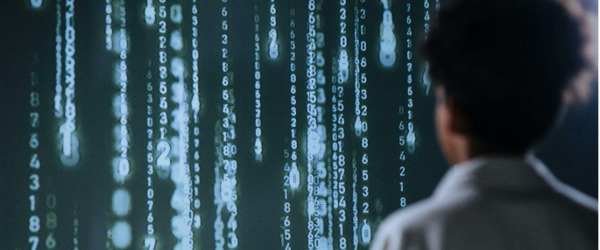Mammography has long been the gold standard for breast cancer screening, effectively detecting potential changes in breast tissue before any symptoms, like lumps, arise. However, it's not without its limitations. Some people require additional imaging, such as ultrasound or MRI, due to factors like dense breasts or increased risk from BRCA gene mutations or family history. False positives on a mammogram can often lead to unnecessary biopsies. Despite these challenges, mammograms and other screening tools remain essential. This emphasizes the importance of advancing screening technology and pathology, which is where AI shows promise for improving outcomes.
Doctors have been using computers for decades to help identify abnormalities in medical images. Today, artificial intelligence (AI) plays an integral role in our daily lives. AI refers to a computer's ability to imitate human behavior, such as learning and decision-making. Developers program and train AI systems to detect patterns in large numbers of data. After this training, the program can begin to independently analyze new data and make predictions.
How can AI help with breast cancer detection?
- Predicting risk: A study published in June 2023 found that AI outperformed the Breast Cancer Surveillance Consortium’s (BCSC) risk model in predicting breast cancer risk. The BCSC estimates a woman's 5-year risk of developing invasive breast cancer based on factors like age, family history, race or ethnicity, breast density, and any previous benign breast biopsies. However, while AI proved more accurate than the BCSC model alone, the most reliable predictions were made when both AI and the BCSC model were used together.
- Preventing unnecessary biopsies: Up to 80% of the breast biopsies performed in the U.S. turn out to be benign (noncancerous). A study in 2023 using an AI tool called iBRISK (intelligent-augmented breast cancer risk calculator) showed the tool could accurately predict whether abnormal tissue identified by doctors was more likely to be benign or cancerous 89.5% of the time.
- Reducing false alarms: A false positive result occurs when the radiologist detects an abnormal finding on a mammogram that doesn't turn out to be breast cancer. Before cancer can be ruled out, however, doctors may need to order follow-up tests, such as additional mammogram images, an ultrasound, and/or a biopsy. A study in 2020 of more than 91,000 mammograms from women in the U.S. and the U.K. found that the use of an AI system lowered the rate of false positives by almost 6% in the U.S. and by 1.2% in the U.K.
- Identifying cancer earlier: AI systems appear to have the ability to pick up very subtle signs of early cancer that the human eye might miss. In 2023, a study which followed 80,000 women from Sweden compared AI-supported screening directly with standard screening. Their findings suggested that AI-assisted screening was as good as two radiologists working together. Another study in Germany and the U.S. which had AI looking at nearly 1.2 million mammograms found that having a radiologist and an AI tool working together was 2.6% better at detecting breast cancer than a radiologist alone.
Ongoing research is focused on validating the accuracy of AI models for detecting breast cancer, particularly through mammograms. A major study, set to begin in 2025 by the U.K.’s National Health Service, will use AI to analyze two-thirds of at least 700,000 mammograms conducted in England over the next few years. The goal is to determine whether AI can match the accuracy and reliability of radiologists in reading scans. Professor Katharine Halliday, president of the Royal College of Radiologists, emphasized that “…while AI holds great promise, it also carries major risks”, highlighting the importance of carefully designing AI programs to ensure they deliver consistent, reliable results for individuals of all ethnic backgrounds.
This emphasizes a key challenge with artificial intelligence: its accuracy depends on the quality of its programming. AI tools developed for healthcare must be carefully designed to benefit diverse populations, ensuring they are universally applicable and effective. Expanding the representation of diverse healthcare demographics and incorporating broader data in research for AI-assisted breast cancer detection and diagnosis would reduce errors and improve accuracy for a wider range of patients.







